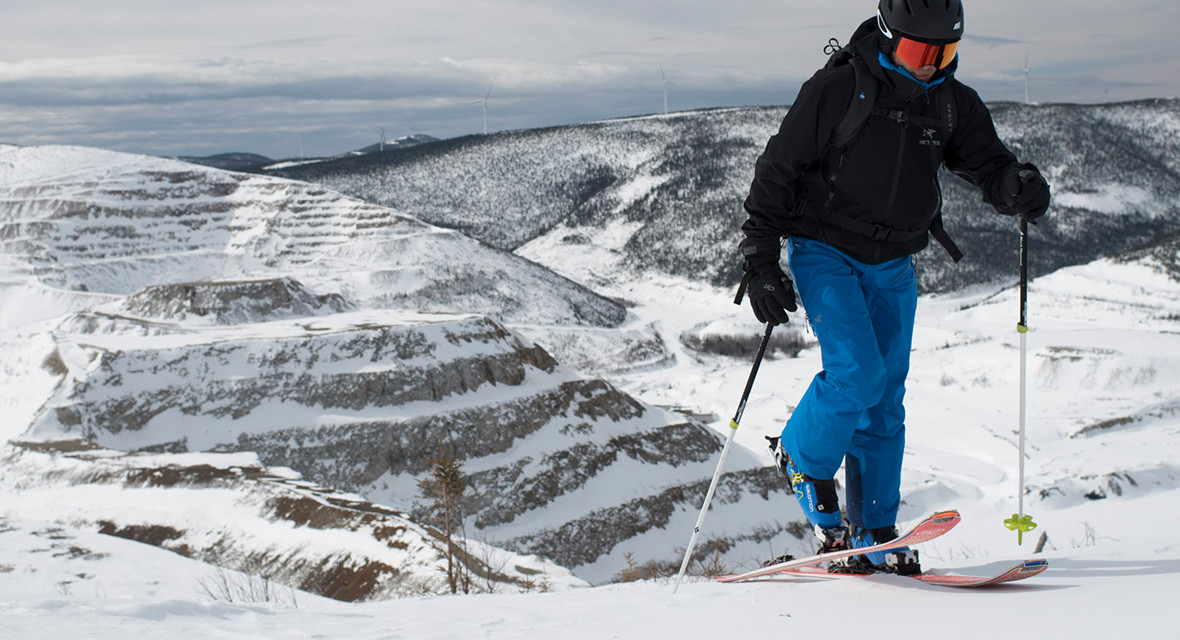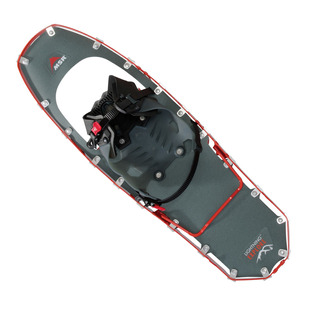
Alpine ski touring or snowshoeing: the right gear for you
Far from the downhill runs, alpine ski touring and snowshoeing are two perfect sports activities for those who seek freedom and new thrills off the beaten track. But how do you gear up for the backcountry snow? Discover our tips to help you find the perfect equipment and clothing for your winter treks.
Snowshoes: preparing your equipment
Snowshoes have been around for thousands of years, used by those who had to survive through winter climates, particularly the North American native peoples who made them to get around effectively in the snow.
Today, snowshoeing has become a complete sport of its own. Fun and affordable, it complements other winter sports like skiing and gets more people out into the mountains.
To truly appreciate snowshoeing at its best, you need to consider these three items of equipment: the proper pair of snowshoes, walking poles and hiking shoes.
-
The right pair of snowshoes
There’s quite a selection of snowshoe shapes and sizes to choose from to go with your body type and the kind of snow trekking you plan to do. You should first research their weight capacity to determine their flotation, i.e. the right surface contact area to keep you above the snow and from sinking into it. To do this, determine your total weight by getting on a scale, fully geared up in your boots, clothing, backpack and any other items you’ll carry.
Next, ask yourself what kind of snowshoeing you’ll do and in what kind of snow conditions. For example, if you prefer to snowshoe on a harder-packed, groomed trail, “classic” snowshoes with a smaller surface area are all you need. On the other hand, if you plan to get off the beaten path and hit the backcountry, you’ll want mountain snowshoes equipped with crampons and teeth for better traction on inclines. If what you’re really looking to experience is virgin snow, wider snowshoes will give you better flotation.
As there are many models of snowshoes out there, don’t hesitate to visit a store and ask one of our expert employees to help you try them on with your boots.
|
Tip
When trying snowshoes on, stand up in them to check that you feel no pressure points.
|
Shop for your snowshoes
20% - Applied

- Poles
For the best balance when walking, a pair of poles is recommended, particularly if you plan to snowshoe in uneven terrain or in fresh powder. In terrain with a lot of steep sections, telescopic poles have the advantage of adapting to the uneven landscape.
On seriously snow-covered terrain, you’ll want poles with wide-diameter baskets to keep them from sinking.
Shop for your walking poles
- Hiking footwear
To practice snowshoeing, you need proper warm, waterproof and breathable high-tophiking shoes. Your current winter footwear may be up to the task, but you’ll want to test them out to make sure.
And don’t overlook your socks. You’ll want warm, breathable socks to evacuate perspiration and keep your feet dry.
Shop for your snowshoeing boots
- The right outfit
You’re clothing will depend on the type of trails you’re planning to trek. For example, if you plan a gentler hike, the priority will be warmth. Wear breathable underclothes and a layer of polar fleece to insulate you from the cold and a warm jacket for protection from unpredictable weather. For pants, choose a pair that will both keep you warm and give you ample freedom of movement. If you’re heading out on a more athletic trek, apply the three-layer rule, but with even more breathable clothing (same thing for the pants).
You’ll also want to slip on gaiters to prevent snow from getting into your boots.
Finally, don’t overlook the “practical” side of your clothing, like convenient pockets to carry things like snacks.
Alpine ski touring: preparing your equipment
As already mentioned in our article “Alpine Touring: A Sport to Try Out”, this ski discipline continues to grow in popularity. It’s practiced mostly off-trail, combining hiking and downhill skiing with specialized equipment. For many alpine skiing enthusiasts, it’s the best way to find the freshest powder to ski.
Whether you’re a beginner or a committed ski bum, alpine touring requires the proper equipment, most importantly: skis, boots, climbing skins and ski poles.
- The right pair of skis
They may appear similar to downhill skis, but alpine touring skis actually give you two modes of movement, as the bindings let you secure or unlock the heel:
- Skiing mode: lock the boot on the ski to descend the same way as downhill skiing.
- Climbing mode: unlock the heel (like with cross-country skis) so that you can walk naturally and easily.
In general, lighter, wider skis are best, somewhere between 90 and 110 mm.
Shop for your alpine touring skis
- Boots
You want flexibility when it comes to your boots. They need to offer a wide range of movement, particularly for walking on mountain slopes. Our choice is touring boots that can be unlocked for an easy switch into walking mode. Like downhill ski boots, it’s essential to try them on before buying them.
Shop for your alpine touring boots
- Climbing skins
In terms of accessories, you need to have climbing skins to attach to your skis before you start climbing in order to avoid back-sliding.
|
Complementary accessories
Also consider bringing with you:
· A backpack that’s big enough for your trek
· Snacks
· A bottle of water
· Ski goggles
· Ski helmet
· Sun cream
|
- Ski poles
Whether you’re climbing up or skiing down the slope, you’ll need a pair of ski poles. They reinforce your balance and lower your chances of sliding. Poles can also be very useful to get over or around obstacles.
Shop for your ski poles
|
Safety tip
Leaving for the winter backcountry? Make sure you bring all the proper safety items, such as maps, a compass or GPS, an avalanche victim detector (AVD), a probe and a shovel. You’ll be prepared for anything.
|
- The right clothing
Just as for snowshoeing, use the three-layer rule: underclothes, a sweater and a jacket. Make sure to bring light, breathable clothing for your ascent, and always keep an additional layer of insulation to slip on for the downhill run. For the pants, you’ll want a strong, warm, breathable pair. And of course, don’t forget your toque and mittens!
Slipping into a pair of snowshoes or skis is the best way to get out and admire Mother Nature in the winter time. It means getting off-trail, and off the beaten path, to discover vast stretches of virgin snow and breathtaking views.
If you’d like to know more, please don’t hesitate to visit one of our Sports Experts stores and consult one of our snowshoe and alpine ski touring experts.













